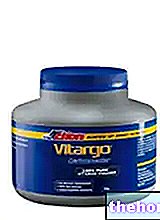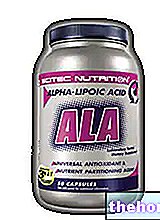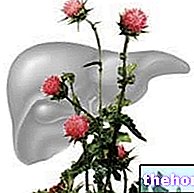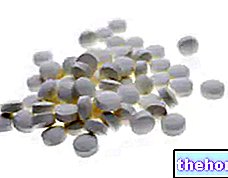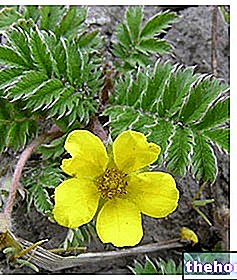
About Cm2 Nitrate - SAN
CM2 NITRATE - SAN
Food supplement based on arginine, beta alanine and creatine
FORMAT
Pack of 240 capsules
COMPOSITION
Di - Arginine sick
Beta Alanine
Creatine nitrate
Bulking agents: calcium carbonate, cellulose
Anti-caking agents: stearic acid, cross-linked carboxymethylcellulose, silicon dioxide and magnesium stearate
Coating agent: hydroxypropylmethylcellulose
PER PORTION (3 capsules): Di-arginine Malate 666 mg - Beta Alanine 533 mg - Creatine nitrate 333 mg

Arginine is a conditionally essential amino acid, the need for which can be satisfied both through endogenous synthesis and dietary intake. Introduced orally through foods such as peanuts, legumes and meat, arginine is absorbed at the duodenal level, representing an important energy and plastic source for enterocytes. The portion not used by these cells is released into the circulation from the basal-lateral portion and reaches the various parts of the body, in particular the liver, where it supplies the urea cycle, thus guaranteeing detoxification from ammonia.
In the overall metabolic-functional balance, this amino acid falls within:
- strengthening of the immune defenses (as it is used by cells in active and intense replication);
- in the creatine agreement: together with glycine and methionine;
- in protein synthesis;
- in the synthesis of collagen, polyamine and proline, facilitating reparative phenomena;
- in allowing the synthesis of glucose starting from non-glucidic precursors (gluconeogenesis)
In sports, its use is mainly due to two very important potentials:
- Precursor of nitric oxide: powerful vasodilator that would allow a better flow of oxygen and nutrients in the muscles;
- Inducer of GH secretion: which would guarantee an increase in lean mass at the expense of fat.
However, it is necessary to remember that both processes are somewhat complicated and do not depend solely on the availability of the substrate, but on a complex of metabolic and physiological situations that are difficult to reproduce. Most of the studies published in the literature define arginine as useful in improving performance. physical, delaying the onset of anaerobic metabolism and improving the maximum peak of strength.
Beta Alanine - amino acid characterized by an alternative chemical structure, with the presence of the amino group in the beta position. This structural peculiarity significantly affects the functionality of beta alanine, so much so that, unlike the other amino acids (L-amino acids), it does not participate in the protein synthesis process. Despite this limitation, beta alanine strongly re-enters muscle metabolism, in the form of carnosine. Carnosine is a dipeptide consisting of beta alanine and histidine, synthesized in the liver and stored mainly in the brain (about 5 mM) and muscular (skeletal) (about 20mM); it guarantees:
- a "protective action against free radicals;
- a "stabilizing action of cell membranes;
- a "protective action against muscle damage induced by" intense physical exercise;
- Better calcium homeostasis, and greater sensitivity of muscle fibers;
- A "buffering action" muscle acidosis;
- An increase in energy availability;

Creatine nitrate - creatine salt obtained by adding a nitrate group. The efforts made to obtain this compound go beyond the improvement of the kinetics or the degree of absorption, and are directed towards the vasodilatory function induced by the release of nitric oxide, which should follow the ingestion of this product. Despite the potential benefits described by various manufacturers, even in the reduction of gastrointestinal side effects, there is a lack of significant experiments in this regard.
About 95% of the total creatine content of the human organism is present in the skeletal muscle, much of it in the form of phospho-creatine, representing a ready-to-use energy reserve for muscle fibers. During the first minute of intense physical activity , the contraction of muscle fibers, in particular those of type II, is supported by phosphocreatine, able to transfer its phosphate group to the ADP, ensuring the synthesis of the ATP necessary for the actinic filaments to slide over the myosin heads and to the subsequent contraction.The muscle availability of creatine, which significantly affects the energy properties of the muscle, depends on the amount effectively integrated through endogenous synthesis and dietary intake. On average, for a healthy man weighing 70 kg, a requirement of about 2 grams per day is estimated. , equal to 1.6% of the total 120 grams available in the body. The need for supplementation depends on the amount of creatine lost in the kidney in the form of creatinine, an amount that tends to increase during physical activity. Several studies have demonstrated how oral supplementation with creatine can increase muscle pull by about 20% and significantly affect:
- Improvement of maximum strength and power;
- Improvement of sub-maximal strength;
- Improvement of aerobic performance;
- Reduction of muscle fatigue;
- Improvement of body composition;
and probably also on the aerobic capacity of the athlete and on the protection of muscle tissue.
Product features Cm2 Nitrate - SAN
The product in question, which was created with the aim of definitely improving the anaerobic abilities of the athlete, focuses on different synergistic metabolic aspects:
- Improve haemodynamic characteristics by increasing the level of nitric oxide;
- Energetically support the muscle by increasing the muscle phosphocreatine pull;
- Improve the buffering capacities of the organism;
- Reduce to the feeling of fatigue;
- Protect the muscle from oxidative damage induced by intense physical exercise.
Despite all the assumptions, it becomes quite difficult to express a "scientific" opinion, based on experimental data and not on potentialities and theories, given the absence of studies that attest to the efficacy of formulations such as creatine nitrate or arginine malate.
Method of use recommended by the company - Cm2 Nitrate - SAN
It is recommended to take 2 capsules a day swallowed with plenty of water
Directions for use in sports Cm2 Nitrate - SAN
It is very difficult to formulate an appropriate dosage, given the absence of studies using this type of supplement.
However, in defining an optimal dosage it must always be considered that this product cannot and must not be used as an arginine, creatine or alanine supplement, as it would hardly be able to provide the dosages used in sports practice.
In general, intake on an empty stomach should be preferred, to avoid competitive phenomena in absorption, and preferably 60 minutes before training, in order to have maximum availability of the components during training and for a maximum of 4 weeks. Given the absence of terms of comparison, it would be preferable to use the quota defined on the label.
Synergies Cm2 Nitrate - SAN
Numerous studies have shown how the synergy between arginine and creatine can significantly improve the ergogenic properties of the supplement and significantly increase maximum strength.
The simultaneous intake of creatine and beta alanine is also very interesting, documented by various studies that highlight:
- Increased carnosine muscle pull, with better resistance to fatigue;
- Significant increase in body mass, compared to creatine alone;
- Improvement of ventilatory capacities, and of endurance performance;
However, it should be remembered that all these studies were carried out using creatine monohydrate.
Side Effects Cm2 Nitrate - SAN
Various studies agree that creatine supplementation in healthy individuals is safe. In particular, studies relating to chronic (3-5 gr / day for a year) and acute (20 gr / day for a week) supplementation do not show any effects. particular collateral.
However, it should be remembered that the ingestion of too high or poorly solubilized doses could be accompanied by abdominal cramps, nausea, vomiting and diarrhea, as well as chronic administration, especially if carried out in conjunction with high-protein diets could significantly increase the renal load.
Finally, even if it does not represent a real side effect, it must be considered that the increase in weight resulting from the accumulation of water inside the cell could have a negative impact on performance.
Arginine: The most common side effects, recorded at large doses, are vomiting, diarrhea and abdominal cramps at doses above 9 grams per day.
Massive doses, generally greater than 30 g, can cause nephrotoxicity, hypotension and headaches.
Beta-Alanine: Already at doses of 10 mg / kg there may be cases of paresthesia (tingling), skin redness and heat, which become greater for 20mg / kg and severe for 40mg / kg.
The presence of these side effects is to be attributed to the blood peak that occurs following the administration of Beta alanine; consequently the same effects, although pronounced and dose dependent, tend to resolve rapidly.
Precautions for use Cm2 Nitrate - SAN
The product is contraindicated in cases of renal or hepatic pathology, cardiovascular disease and / or hypertension, during pregnancy, during lactation and under the age of 12 and adolescents not yet formed.
In case of prolonged use (over 6/8 weeks) the doctor's opinion is necessary.
This article, elaborated on the critical rereading of scientific articles, university texts and common practice, is for information purposes only and therefore has no medical prescription value. It is therefore always required to consult your doctor, nutritionist or pharmacist before undertaking the use of any supplement.. Learn more about the critical analysis of Cm2 Nitrate - SAN.
BIBLIOGRAPHY
Int J Sport Nutr Exerc Metab. 2006 Aug; 16: 430-46.
Effect of creatine and beta-alanine supplementation on performance and endocrine responses in strength / power athletes.Hoffman J, Ratamess N, Kang J, Mangine G, Faigenbaum A, Stout J.
Rejuvenation Res. 2008 Jun; 11: 641-7.
Derave W, Jones G, Hespel P, Harris RC.
J Int Soc Sports Nutr. 2009 Feb 19; 6: 6.
Spillane M, Schoch R, Cooke M, Harvey T, Greenwood M, Kreider R, Willoughby DS.
http://www.sportmedicina.com/creatina.htm
Ergogenic effects of creatine in sports and rehabilitation.
Hespel P, Derave W.
Subcell Biochem. 2007; 46: 245-59. Review.
J Nutr Health Aging. 2010; 14: 155-9.
The effects of supplementation with creatine and protein on muscle strength following a traditional resistance training program in middle-aged and older men.
Bemben MG, Witten MS, Carter JM, Eliot KA, Knehans AW, Bemben DA.
J Int Soc Sports Nutr. 2009 Nov 12; 6: 18.
Graef JL, Smith AE, Kendall KL, Fukuda DH, Moon JR, Beck TW, Cramer JT, Stout JR.
Med Sci Sports Exerc. 2009 Sep 2. [Epub ahead of print]
Bazzucchi I, Felici F, Sacchetti M.
Effects of four weeks of high-intensity interval training and creatine supplementation on critical power and anaerobic working capacity in college-aged men.
Kendall KL, Smith AE, Graef JL, Fukuda DH, Moon JR, Beck TW, Cramer JT, Stout JR.
J Strength Cond Res. 2009 Sep; 23: 1663-9.
Creatine supplementation enhances muscle force recovery after eccentrically-induced muscle damage in healthy individuals.
Cooke MB, Rybalka E, Williams AD, Cribb PJ, Hayes A.
J Int Soc Sports Nutr. 2009 Jun 2; 6: 13.
Int J Sport Nutr Exerc Metab. 2009 Feb; 19: 79-96.
Conjugated linoleic acid combined with creatine monohydrate and whey protein supplementation during strength training.Cornish SM, Candow DG, Jantz NT, Chilibeck PD, Little JP, Forbes S, Abeysekara S, Zello GA.
J Strength Cond Res. 2009 May; 23: 818-26.
Herda TJ, Beck TW, Ryan ED, Smith AE, Walter AA, Hartman MJ, Stout JR, Cramer JT.
Effects of creatine monohydrate and polyethylene glycosylated creatine supplementation on muscular strength, endurance, and power output.Herda TJ, Beck TW, Ryan ED, Smith AE, Walter AA, Hartman MJ, Stout JR, Cramer JT.
Int J Sport Nutr Exerc Metab. 2008 Aug; 18: 389-98.
Burke DG, Candow DG, Chilibeck PD, MacNeil LG, Roy BD, Tarnopolsky MA, Ziegenfuss T.
Physiol Behav. 2008 Sep 3; 95 (1-2): 130-4. Epub 2008 May 15.
Rawson ES, Lieberman HR, Walsh TM, Zuber SM, Harhart JM, Matthews TC.
J Int Soc Sports Nutr. 2006 Jun 23; 3: 60-6.
Schoch RD, Willoughby D, Greenwood M.
http://www.ncbi.nlm.nih.gov/pmc/articles/PMC2129152/?tool=pubmed
J Int Soc Sports Nutr. 2008 Feb 13; 5: 4.
Jäger R, Metzger J, Lautmann K, Shushakov V, Purpura M, Geiss KR, Maassen N.
Creatine supplementation does not reduce muscle damage or enhance recovery from resistance exercise.
Rawson ES, Conti MP, Miles MP.
J Strength Cond Res. 2007 Nov; 21: 1208-13.
J Nutr Health Aging. 2007 Nov-Dec; 11: 459-64.
Stout JR, Sue Graves B, Cramer JT, Goldstein ER, Costa PB, Smith AE, Walter AA.
Appl Physiol Nutr Metab. 2007 Dec; 32: 1052-7.
Chilibeck PD, Magnus C, Anderson M.
Clin Sci (Lond). 1992 Sep; 83: 367-74.
Harris RC, Söderlund K, Hultman E.
Br J Sports Med. 1996 Sep; 30: 222-5.
Thompson CH, Kemp GJ, Sanderson AL, Dixon RM, Styles P, Taylor DJ, Radda GK.
J Appl Physiol. 1996 Jul; 81: 232-7.
Hultman E, Söderlund K, Timmons JA, Cederblad G, Greenhaff PL.
Int J Sport Nutr. 1995 Jun; 5: 94-101.
Maughan RJ.
Med Sci Sports Exerc. 1998 Jan; 30: 73-82.
Kreider RB, Ferreira M, Wilson M, Grindstaff P, Plisk S, Reinardy J, Cantler E, Almada AL.
Subcell Biochem. 2007; 46: 275-89.
Persky AM, Rawson ES.
Int J Sports Physiol Perform. 2006 Dec; 1: 311-23.
Francaux M, Poortmans JR.
Regul Toxicol Pharmacol. 2006 Aug; 45: 242-51. Epub 2006 Jun 30.
Shao A, Hathcock JN.
Am J Physiol. 1996 Nov; 271 (5 Pt 1): E821-6.
Green AL, Hultman E, Macdonald IA, Sewell DA, Greenhaff PL.


